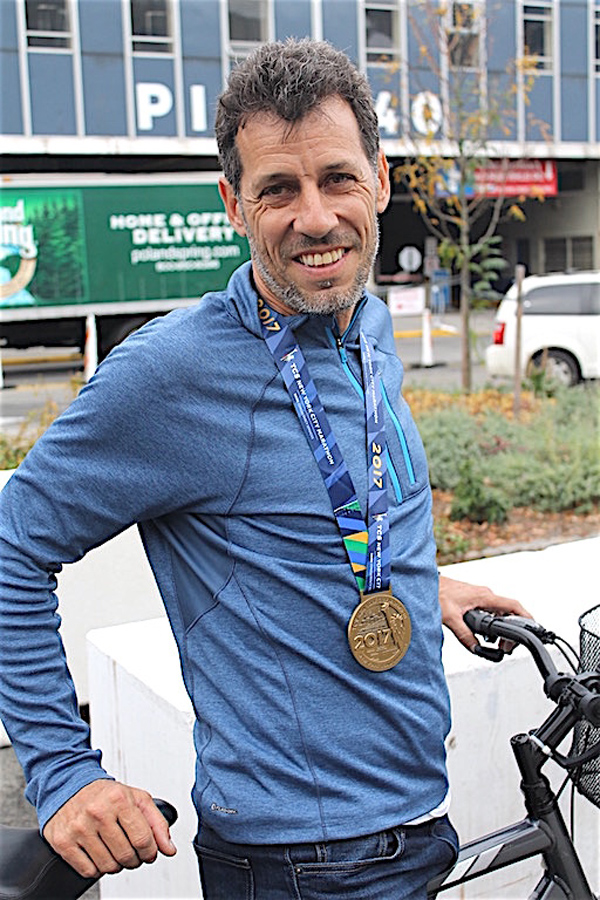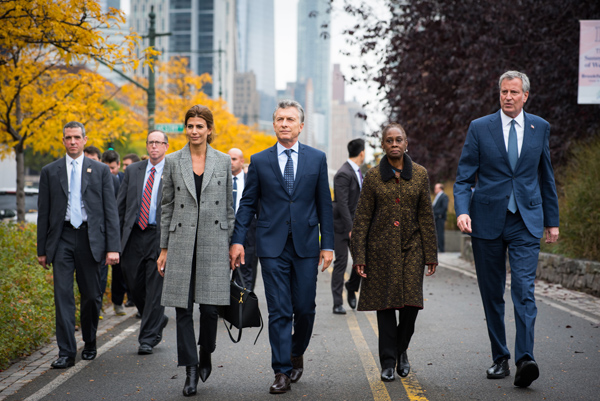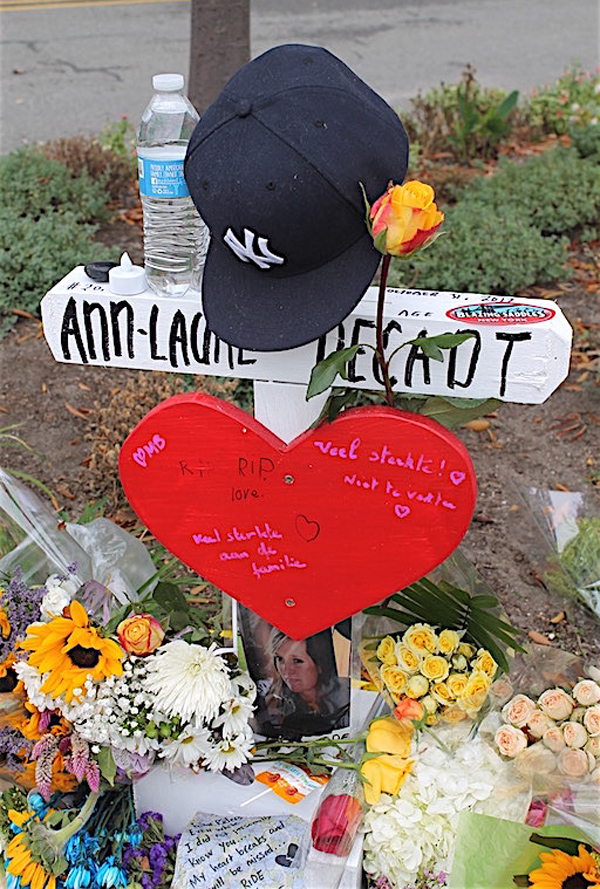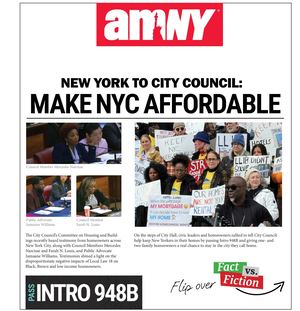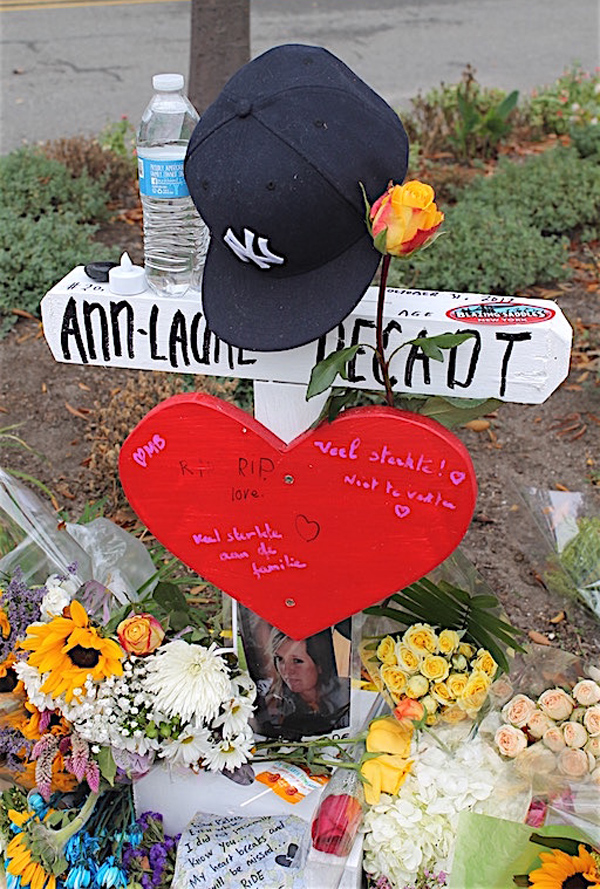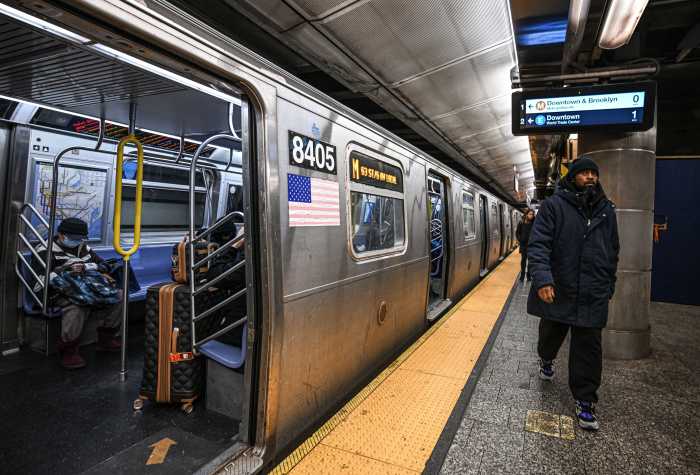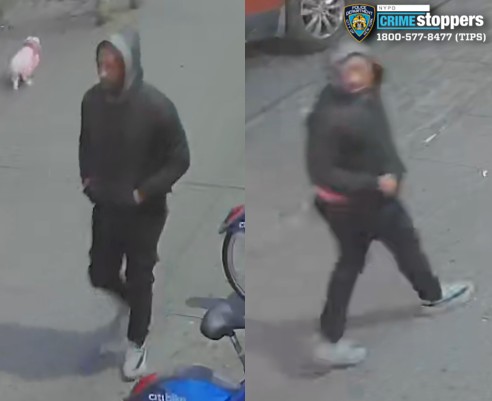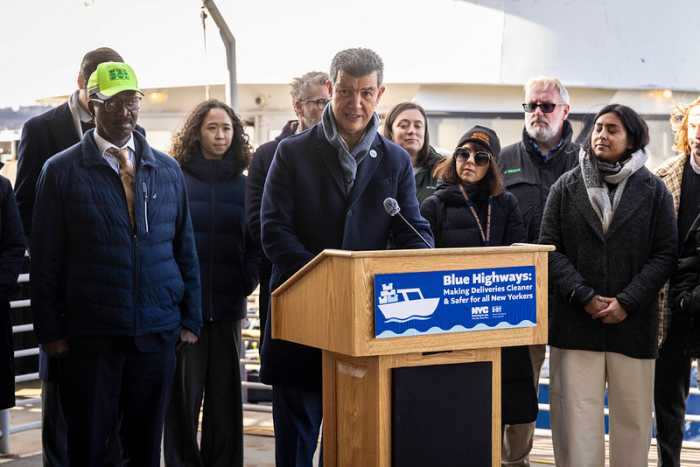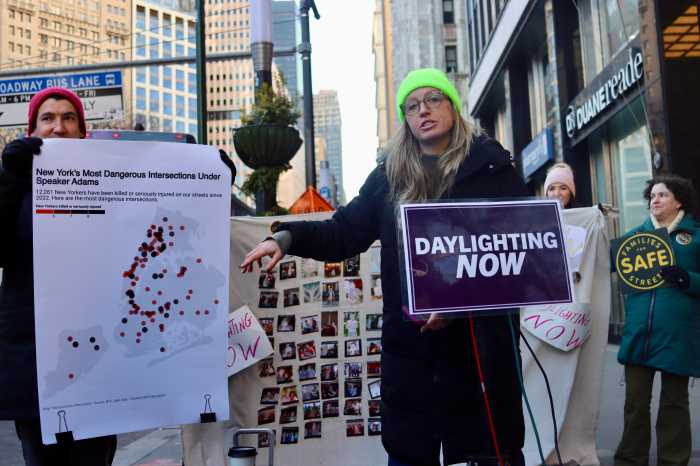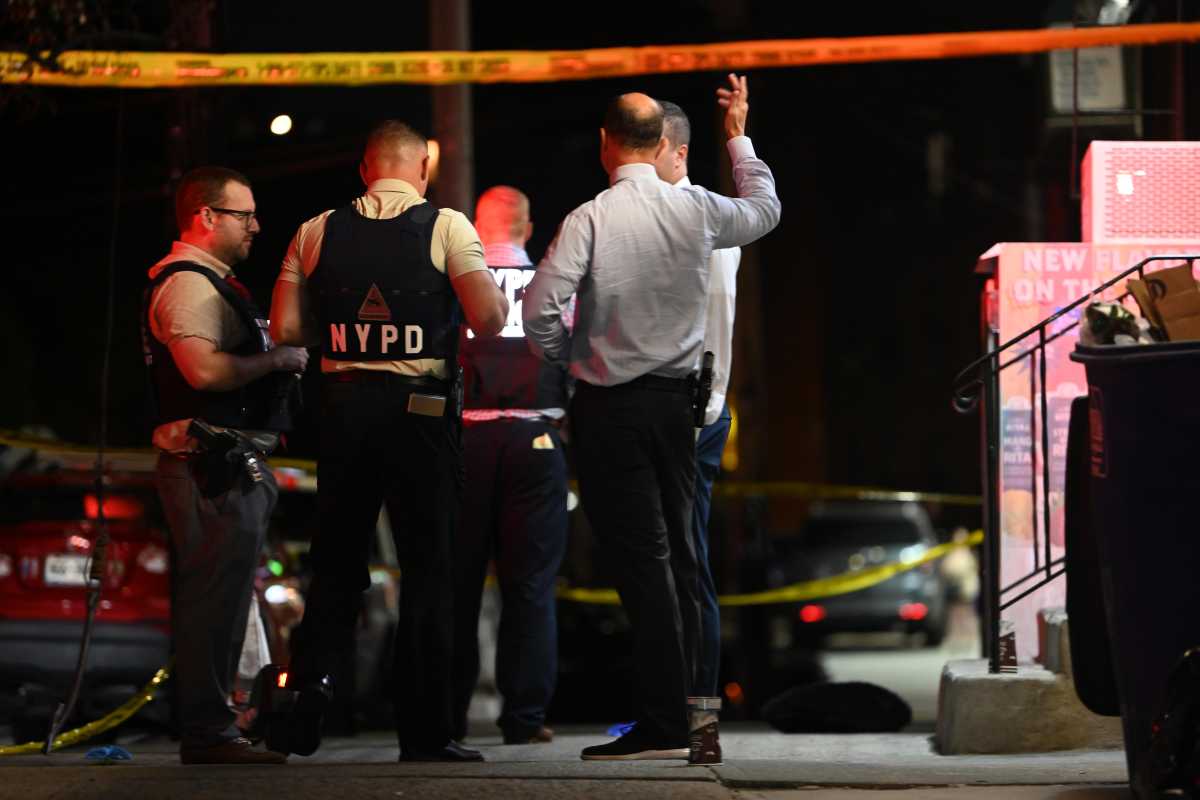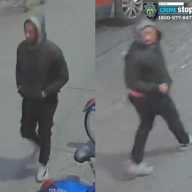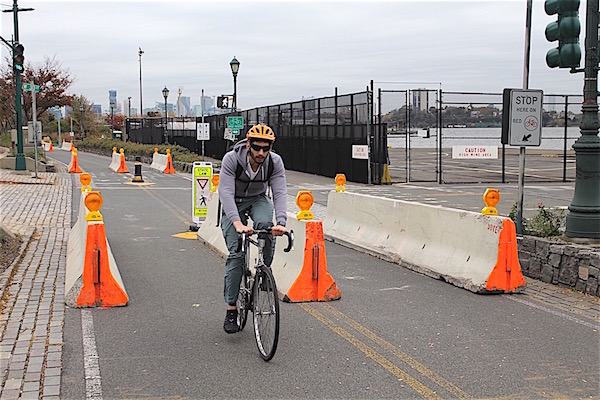
BY LINCOLN ANDERSON | Following Tues., Oct. 31’s horrific attack on the Hudson River greenway that saw an ISIS-enthralled terrorist kill eight people as he gunned a truck for a mile down the path’s Lower West Side/ Tribeca section, the state Department of Transportation (DOT) scrambled to put protective barriers on the popular path.
It was, initially, a bit chaotic. At first, long Jersey concrete barriers were plopped down on the northern part of the path — running up to W. 59th St. — at an angle, significantly narrowing the bikeway, only allowing room for cyclists to pass single file on either side. On the path’s southern section, from the Village down to the Battery, smaller white concrete blocks — some stamped on their sides with “NYPD” in large blue letters — were added.
A mayoral spokesperson stated that 57 spots from W. 59th St. down would get “blockers.”
However, Streetsblog reported that after complaints by Mayor Bill de Blasio and cyclists, DOT — which oversees the bikeway — agreed to straighten out the Jersey barriers. That was occurring on the morning of Tues., Nov. 7, as work crews could be seen busy north of Chelsea Piers, placing and aligning the Jersey barriers so that they were parallel to the path. In many cases, three of the barriers are being installed at key intersections to block full-size cars from getting on the path: one barrier is on the median stripe, and two others are on the outsides of the path. At tighter spots, there are two Jersey barriers on the path’s edges or side by side in the middle of the path.
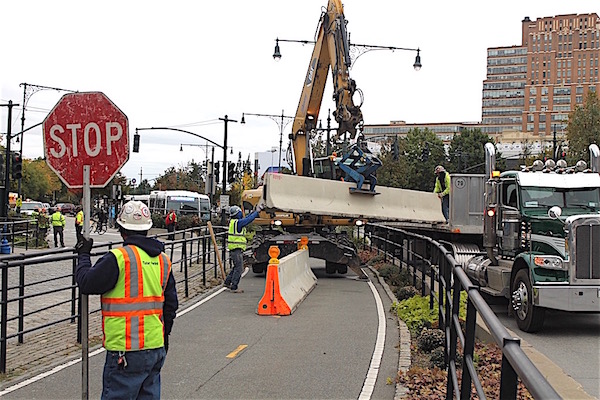
A crew of DOT workers, all wearing orange hard hats and vests, were supervising the installation of side-by-side barriers near the “S” curve at the northern end of Chelsea Piers around 11:30 a.m.
“This is a temporary fix,” their chief told NYC Community Media regarding the Jersey barriers. He said they were going to install the long barriers “all the way down to the Battery,” but might also possibly keep some of the smaller white blocks.
He didn’t say exactly how many barriers they were going to install, but that they will “assess it as they see it.”
The Jersey barriers’ ends are painted orange for visibility and, as seen in ones installed on the path in the W. 30s, they will also sport yellow lights at their ends for nighttime visibility.
A quartet of Belgians on Citi Bikes who had run in Sun., Nov. 5’s NYC Marathon were waiting on the path as a worker held a “STOP” sign as a crane was lowering one of the barriers into place. One of their countrywomen was among the eight killed in the Oct. 31 attack. Asked their thoughts about the new security measures on the path, they said it was the right thing to do.
“It’s terrible,” one of them said of the attack, adding of terrorism, in general, “It’s all over.”
The hard hat holding the “STOP” sign said it’s obvious what should be done.
“See those ballards [sic] that are sticking up,” he said, referring to some bollards along the north edge of the “S” curve. “That’s what you gotta do. They have ’em at the airport. They have ’em at the World Trade Center.”
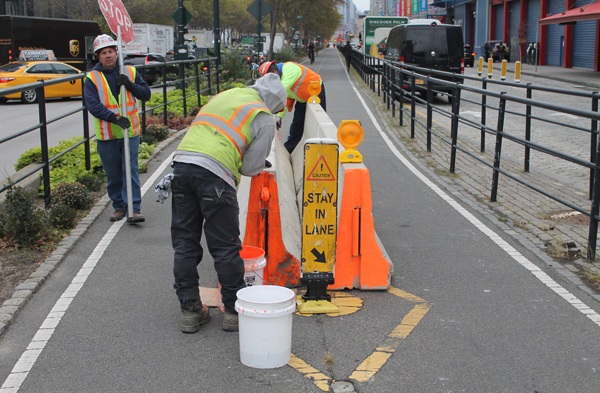
Attorney Steve Vaccaro — who represents seriously injured cyclists and pedestrians — cycle-commutes on the Hudson River bikeway daily from his Upper East Side home to his law office in Lower Manhattan. Speaking the day before DOT started straightening out the Jersey barriers, he said, “I think they present an unacceptable level of danger and slow down traffic on the bike path. Governor Cuomo rushed those in. They came from the state. This is the busiest bike path in North America, and to narrow it down to single file, you’re really asking for trouble. It’s a bike superhighway.”
He said he prefers the NYPD white blocks that were installed on the path’s lower section.
On the other hand, Vaccaro said, “Bollards present a hazard, but we may have to live with them.”
The key, he said, is to block sedan-size cars and vehicles from getting onto the path, while still allowing smaller vehicles, like the ones Park Enforcement Patrol officers and Hudson River Park Trust staff use, to go through.
The bike attorney’s recommendation is to have bollards that can be remotely lowered to allow police cars and ambulances to get by, as needed. He suggested that a set of “master controls” could be manned at the Trust’s headquarters, at Pier 40, at W. Houston St., and people could call the person at the switch if they needed to get through.
Yet, some have pointed out that if terrorists really still want to attack the path, they could simply drive over the grassy median that separates it at points from the highway.
“I don’t believe you can make the path 100-percent impervious to a terrorist attack,” Vaccaro admitted.
Although whatever is out there now is being called interim, he noted that often “interim” becomes “permanent.”
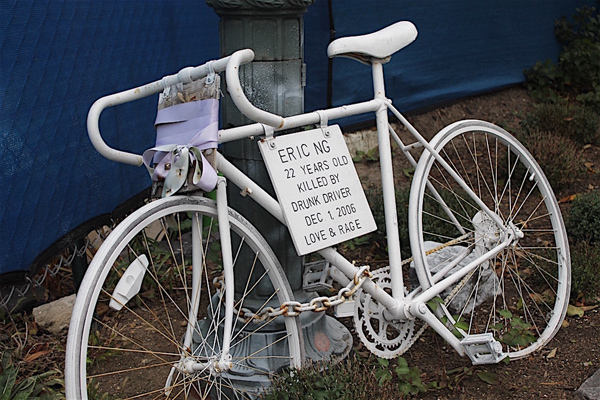
Speaking early last week, State Assemblymember Deborah Glick said she preferred the smaller white concrete blocks over the long, angled Jersey barriers that were making it difficult for cyclists to get by the newly created pinch points.
“Hopefully, the Jersey barriers will be adjusted in a more appropriate fashion,” she said, adding, “We’ve reached out to the Hudson River Park Trust and apparently they feel that it’s really state DOT that’s involved in this.”
State Senator Brad Hoylman initially refrained from discussing specifics of the bike path’s new security measures.
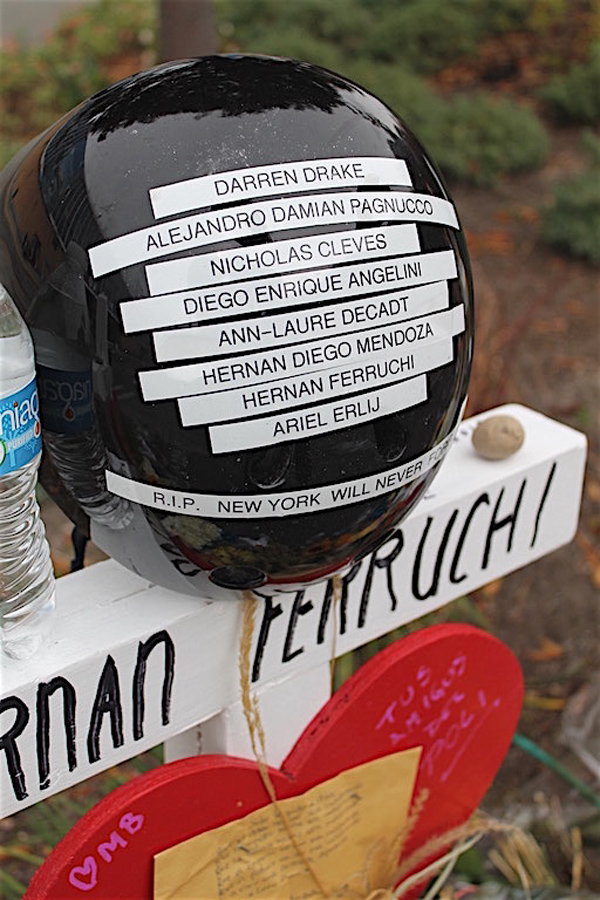
“At this point,” he said, “my thoughts are with the victims and their families, including our neighbor Nicholas Cleves who grew up as a Village kid and was just starting his life. It’s unimaginable that Nick and seven others would be murdered during such a simple and joyous activity as riding a bicycle at this beautiful location. I’m extremely grateful to the NYPD and other first responders who prevented a wider tragedy, and the staff of the Hudson River Park, who were immediately on the scene and deserve our deepest thanks for their professionalism during this difficult time.
“As for the additional barriers being put on the Hudson River bike path, I think it’s appropriate to refrain from commenting on security measures, especially during an open investigation.”
Tobi Bergman, a former chairperson of Community Board 2, a longtime waterfront park activist and a big biker, also weighed in on the bike path situation, when asked about by NYC Community Media.
“There is no doubt they are very ugly and I am worried they may cause accidents,” he said, responding to the initial diagonal placement of the Jersey barriers. “I understand the need for the authorities to deal quickly with what’s in front of them, but I don’t think weaponizing the city is the answer. Fortunately, the technology exists to design and install systems that prevent cars and trucks from slamming into people, purposefully or not, and manufacturers should be motivated to respond to the public need.
“How about calling for a requirement that all rental trucks be fitted with breaking systems that stop the truck when an object, including a pedestrian, is at risk?” Bergman suggested. “The capability is there because some cars have it. I guess it would require federal law. Not sure.”
Bergman noted of the terrorists that they often like to attack “where people are having fun” — like the bike path.
As the Daily News reported, ISIS is now pushing vehicle attacks, saying vehicles — unlike, for example, knives when found on people — don’t arouse suspicion.
“It is for this obvious reason that using a vehicle is one of the most comprehensive methods of attack,” a sick article in an ISIS magazine pronounced last year.
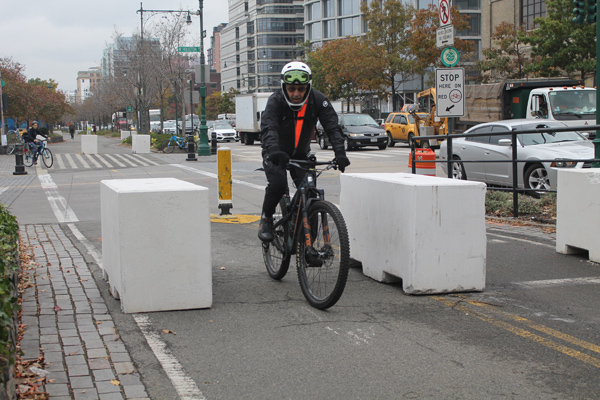
On the morning of Mon., Nov. 6, Mayor de Blasio and his wife, Chirlane McCray, joined Argentine President Mauricio Macri and his wife, Juliana Awada, on the bike path at Desbrosses St. in Tribeca for a memorial tribute to the victims. Five of the slain were school buddies from Argentina on vacation in New York.
“On Tuesday, we all felt a sense of shock, and you see this setting — this peaceful, tranquil setting — where good, innocent people were enjoying the beauty of this city,” the mayor said. “And that’s what we understand about the horror of terrorism, that it is aimed at the innocent, it’s aimed at the unassuming, and it’s meant to change us and undermine us, to make us doubt ourselves and our values.
“But let’s be clear,” he said, “this was not just an attack on eight individuals, not just an attack on New York City [or] an attack on the United States of America, it was an attack on all of humanity.
“We will always be open and welcome to people of all backgrounds, to visitors from all over the world. And even in the depths of our grief, we will not stop being who we are and we will not change our values.”
Afterward, each couple laid a bouquet of white flowers wrapped with a blue ribbon — the colors of Argentina — on the bike path’s low stone wall.
An impromptu memorial to the eight victims is located near the bike path outside the entrance to Pier 40, at W. Houston St., the spot where the terrorist drove onto the path to start cutting his path of carnage. There are eight white crosses, some wrapped with blue-and-white jerseys of Argentina’s national soccer team.
